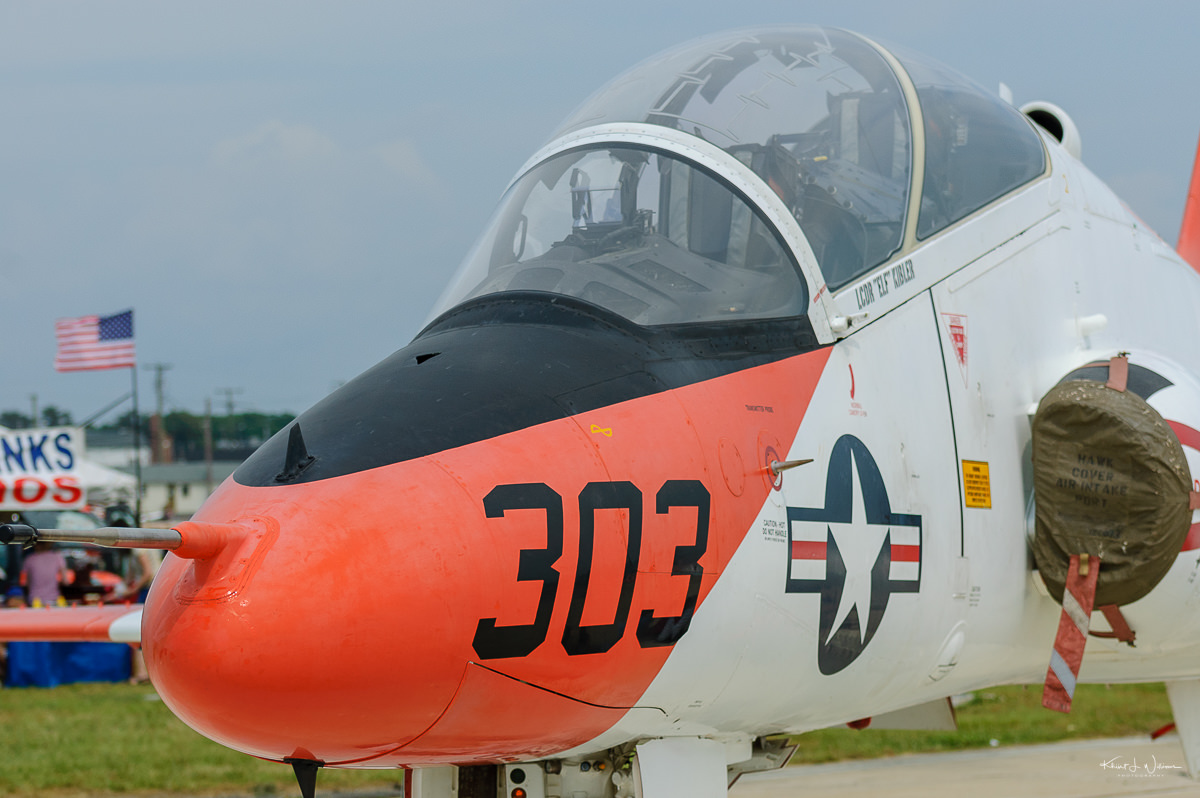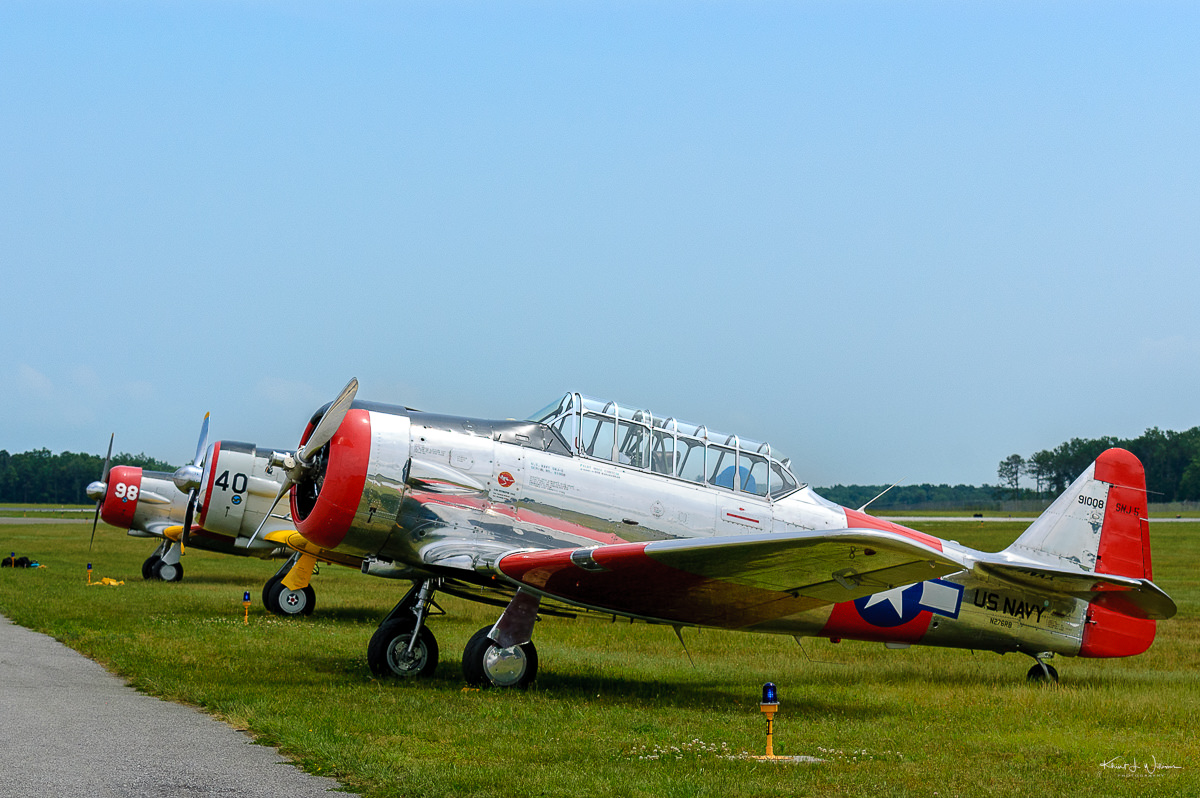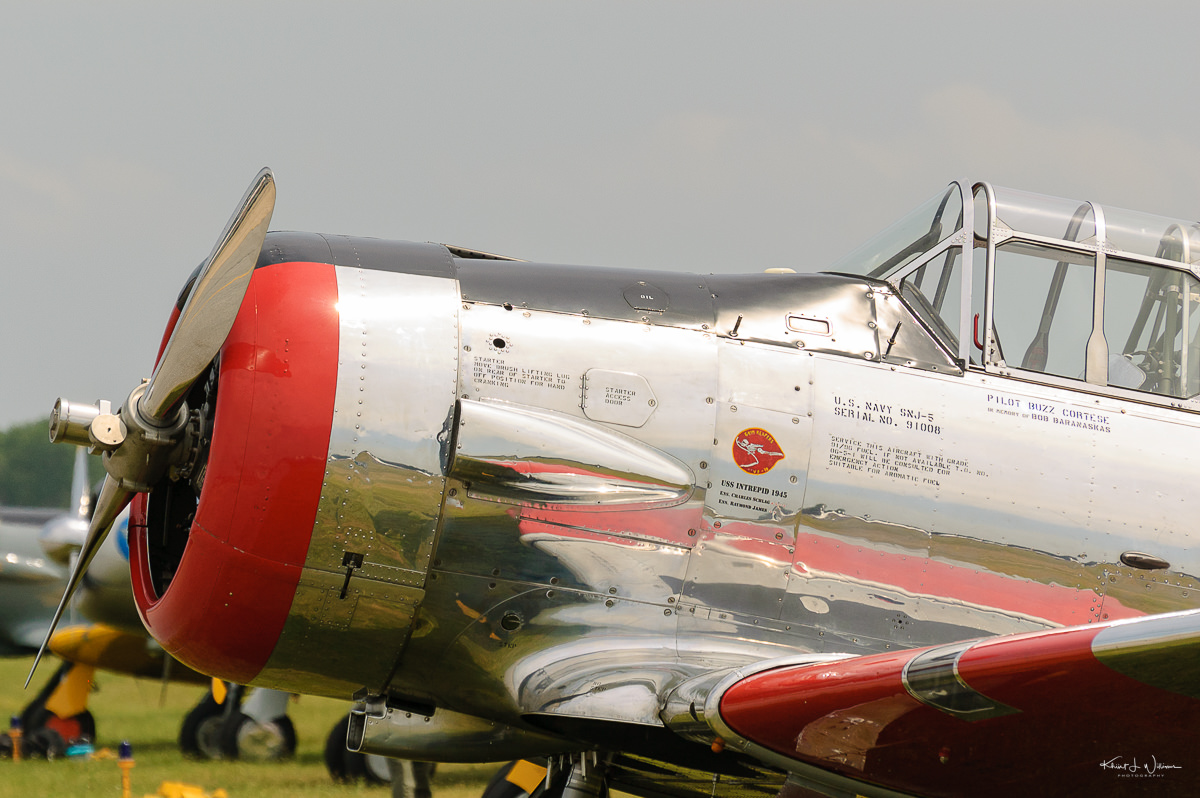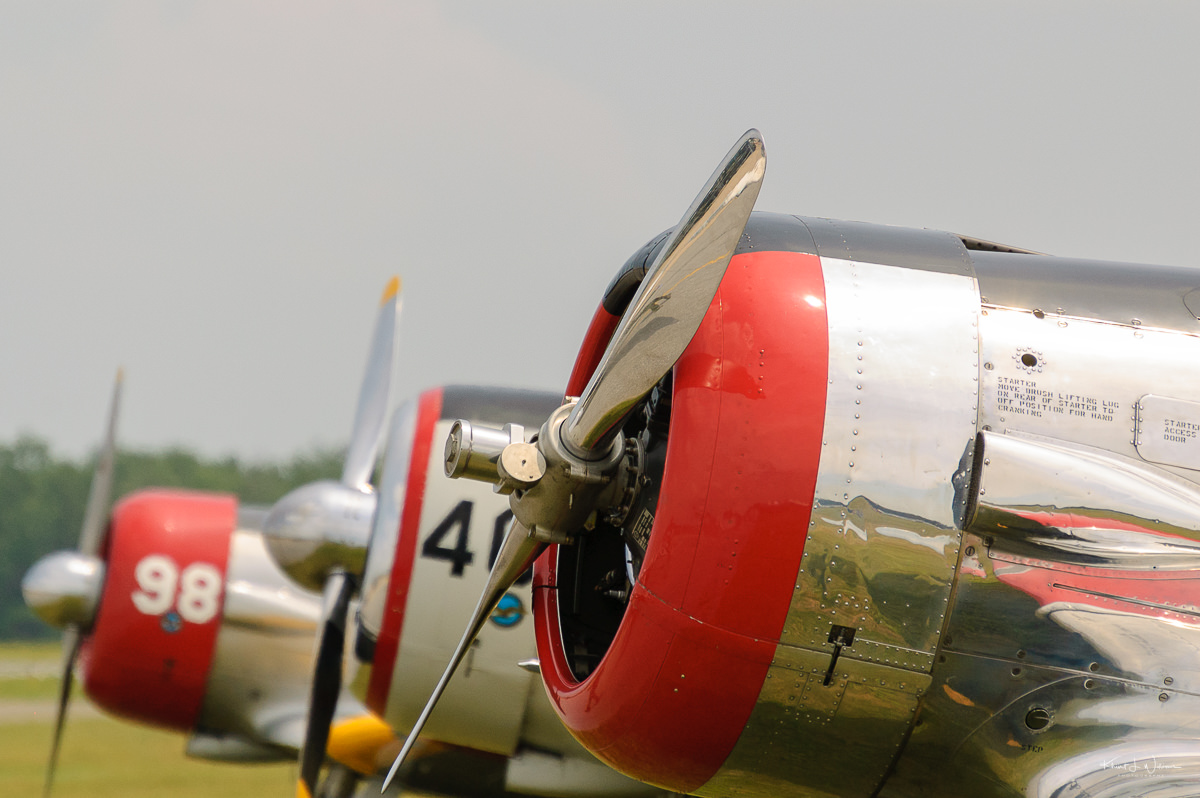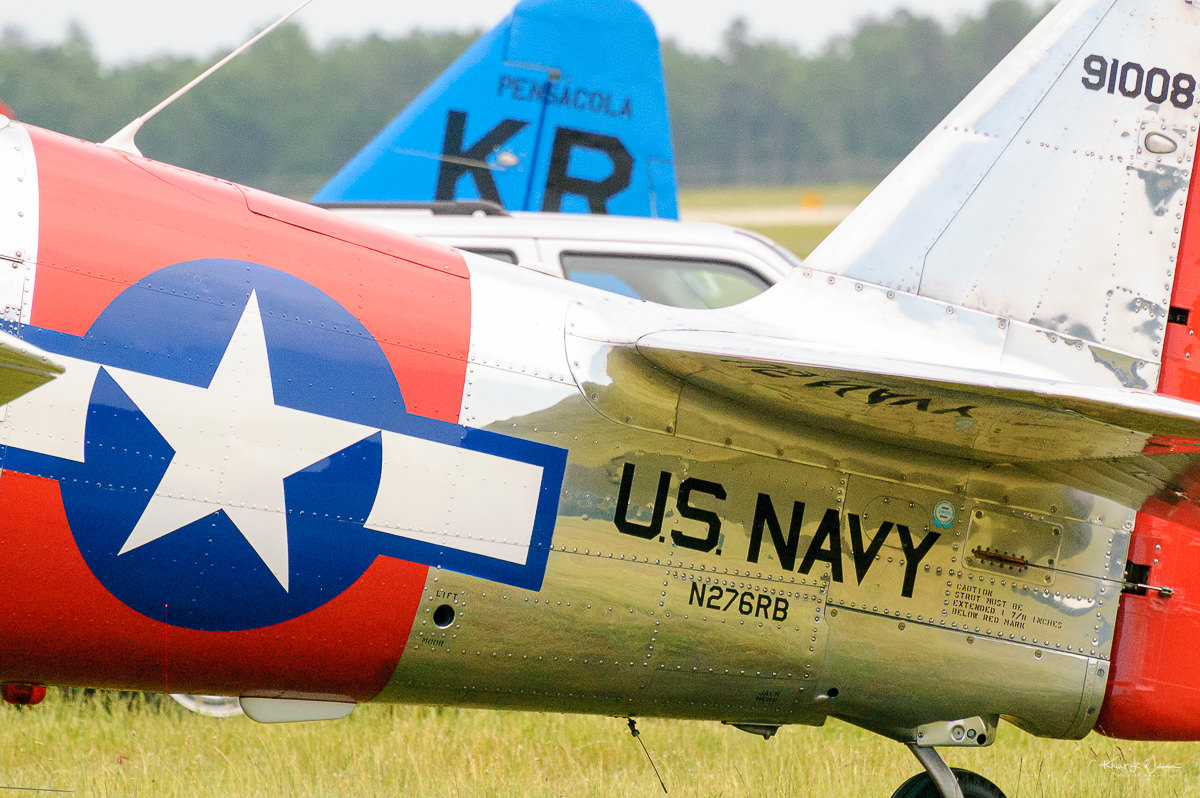This photograph from the 2011 Millville Wings and Wheels Airshow is a profile of a McDonnell Douglas (now Boeing) T-45 Goshawk military trainer. The T-45 Goshawk is framed against a background tableau of Americana, complete with the Stars and Stripes fluttering in the background. Its nose is painted in vivid orange with the number '303' prominently displayed.
This T-45 Goshawk was a mainstay of the United States Navy for training purposes. The sharp contrast of the orange and white livery is not just for aesthetics; it ensures high visibility during training exercises. This colour scheme is often associated with training units, where visibility is paramount for safety. The T-45 Goshawk, a derivative of the British Aerospace Hawk, was introduced in the 1990s.
The cockpit canopy hides the sophisticated controls that have guided pilots through rigorous training regimens. The words 'U.S. NAVY' along the fuselage declare its service, while the 'Hawk' moniker on the engine cover suggests the agility and prowess—attributes essential to training aerocraft that prepare pilots for the challenging environments of combat.
The letters L.COR "ELF" Kibler is written on the side, perhaps suggesting its current trainer.
The text 'Hawk' over 'CVN AIR INTAKE' suggests the aerocraft's compatibility with aeroplane carrier operations, pointing to the 'CVN', the hull classification symbol for nuclear-powered aerocraft carriers. This detail highlights the Goshawk's role in naval aviation, providing an important link between ground-based training and the complexities of carrier operations.
